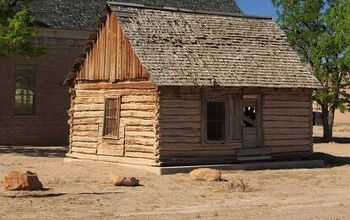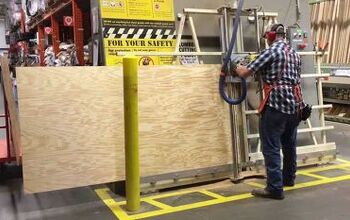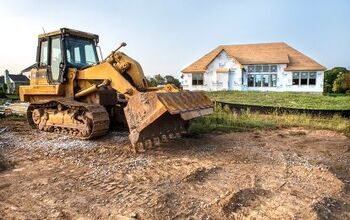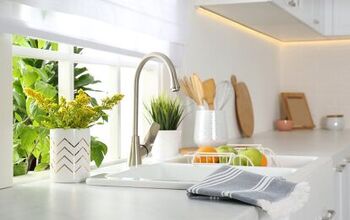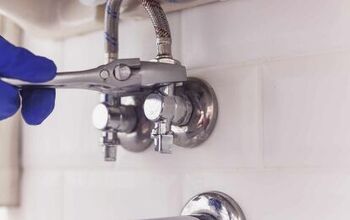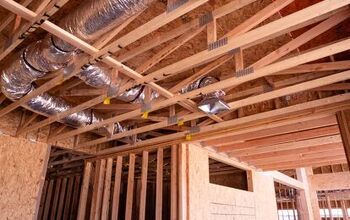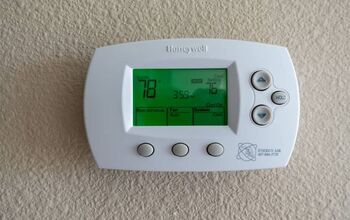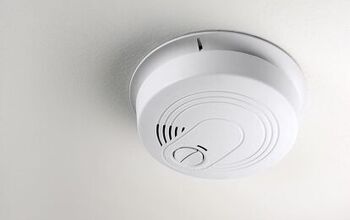How To Downsize Your Garden

Gardeners are quite creative and often like to see how much they can achieve throughout the spring and summer. However, that sometimes results in an overcrowded garden that’s hard to take care of while balancing other responsibilities. That’s why you may understandably want to know how to downsize your garden.
Inspect your garden and see which plants are struggling to grow, and downsize your garden accordingly. Similarly, you can outline an aesthetic and remove plants that don’t meet it to prevent overcrowding. It also helps to stick to native plants that don’t spread and are easy to take care of.
Get practical about how much space and time you can dedicate to your garden. Follow along as we explore how to downsize your garden and free up some space in your yard.
How To Declutter Your Garden
1. Cut Your Losses
You’re not alone if you tend to cling on to certain plants that simply don’t grow well in your garden. Many gardeners want to try again and again, but it’s not always meant to be. The best way to downsize your garden is to get realistic about what thrives and what wastes space.
It’s worth getting rid of any plants that won’t grow well in your garden, no matter how much you try. That doesn’t mean you failed the plant, but it does indicate that it isn’t compatible with your climate or even the soil type. Struggling plants often don't look healthy, so getting rid of them can help make your garden look better and more successful.
Doing so can also help you save time watering and free up some space for garden decorations. Don’t give up on plants right away, but think about how long you’ve tried and they’ve still struggled. Use your best judgment and try to be objective about the situation.
2. Plant Fewer Annuals
Homeowners and gardeners look forward to mixing and matching annuals and perennials each year. However, going overboard and buying too many annuals can quickly turn your gardening routine into a huge chore. Growing annuals is relatively easy, but the turnaround is quick, which means you must do more work.
For example, you must plant, fertilize, and water them, only to dig them up and throw them away when they die when cold weather hits. Granted, you must do that at the end of the season, but it can be a chore if you have many annuals. Conversely, perennials are quite low-maintenance once they’re established in your garden.
You can easily downsize your garden by investing in fewer annuals after they die off and focusing more on perennials. This also has the benefit of allowing you to see how a variety of perennials change in appearance throughout the year.
3. Cut Back On Exotic Plants
How well a plant does in a certain environment has more to do with where it’s originally from than anything else. Importing and planting tropical flowers from Florida may seem like a good idea in the Midwest, but it doesn’t always work. That’s because those plants are meant to thrive in an area with a specific set of daily environmental factors.
More importantly, they’re meant to survive in specific climate cycles that may differ from your location. That’s why your favorite imported palm tree may die shortly after the fall hits and the temperatures drop. You can avoid this problem if you simply stick to native species and avoid exotic plants.
You can still plant a few exotic plants, but it’s important to invest in more native plants. That way, you won’t get stuck with a large patch of discolored, unhealthy plants. Taking care of native plants is easier, takes less time, and can even help you conserve water.
4. Set A Budget
It’s easy to visit a plant nursery and buy way more plants than you planned on. Such impulse buys can be fun, but they can also quickly overcrowd your garden and create a mess. You can stop yourself from buying more plants than you need if you set a budget each spring and summer and stick to it.
Look at your garden and think about how much work, time, and money you spend on maintenance. That includes the cost of soil, mulch, fertilizer, and pesticides. This will help remind you why you don’t necessarily need to buy five more annuals and two new perennials when you went in for a bag of soil.
Of course, you can give yourself some space to buy some new plants that catch your eye. However, it’s important to think about the size of your garden before doing so. Generally speaking, gardens often look better if the plants aren’t crammed so close together.
5. Place Some Decorations
Just because you want to downsize your plants doesn’t mean you want to look at barren soil and grass. Downsizing your garden can give you the perfect chance to set up some fun garden decorations. This can include stones, water fountains, bird baths, and statues.
The sky is the limit, as you can ultimately decorate your garden with anything that makes you happy. You can even install a fire pit and set up some outdoor furniture for when you have guests. Get creative and think of your garden as an extension of your home.
6. Inspect For Diseases And Pests
Have you noticed any plants struggling more than others? It could be because of water and climate factors, but the plant’s poor health may be due to diseases and pests. If so, holding on to the unhealthy plant may put your other plants at risk, especially if they’re close together.
It’s important to inspect all your plants to catch early signs of poor health. However, you must pay special attention to plants that aren’t doing as well as they should. Look at the leaves for any bite marks and discoloration. Remove the plant if you find signs of pest or disease, and keep an eye on the others.
7. See How Far The Plants Are Spreading
Sometimes, plants spread farther than you imagined they would when you first bought the seed packet or pot. It can feel nice at first, but it can be annoying when a plant spreads like wildfire and takes up too much space. Unfortunately, that problem won’t take care of itself if it’s thriving with enough sunlight and water.
Instead, you must decide it’s time to downsize your garden and manually remove the plant. This is common with some groundcover plants, as they sometimes aggressively spread horizontally. You can remove the aggressive plant, but you must dig deep enough to reach the roots.
Otherwise, you can remove the plant by hand if it isn’t buried too deeply in the ground. The key is to uproot the plant to ensure it can’t grow.
8. Pick Favorites
You may love all your plants, but there’s a good chance that you prefer some over others. Walk through your garden and note which ones thrive the best and look the best in your yard. Downsizing your garden is easier if you know for certain which plants you’re unwilling to get rid of.
Start there and rank the other plants based on their appearance, functionality, and maintenance needs. Organize the plants into two lists: “keep” and “don't keep”. That way, you can rationally determine which ones to get rid of based on your preferred criteria.
9. Identify Invasive Plants
Overlooking invasive plants is easier than it sounds if you don’t have an encyclopedic knowledge of local plants. That’s especially true for plants that have been growing in your garden since before you moved in. Invasive plants sometimes spread throughout communities for many reasons, such as wind, flooding, and animals.
Don’t hesitate to do some research if you ever suspect that some of your plants may be invasive. Otherwise, it’s worth familiarizing yourself with the native plants in your area. From there, you can more easily identify invasive plants through the process of elimination.
Getting rid of invasive plants is essential if you want to ensure your other plants can thrive. Doing so will ensure local plants get enough water, nutrients, space, and attention from pollinators.
10. Stick To An Aesthetic
It’s easy to lose sight of your ideal garden aesthetic, especially in the early spring. During this time, many people think about all the possibilities and try to cram as much into their gardens as possible. However, this can lead to an uneven aesthetic in which many plants clash.
You can keep your garden from getting overcrowded if you pick an aesthetic and stick to it. That way, deciding against buying new plants is easier if they don’t fit your overall design. Get rid of or repurpose plants that don’t match your desired look, and keep things how they are.
Summing It Up
The best way to downsize your garden is to get rid of plants that won’t grow and simply look bad in your yard. Check them for pests, diseases, and harmful fungi, then uproot the plants to free up some garden space as needed. Mostly stick to perennials and native plants to reduce your garden maintenance checklist and save time.
Related Guides:

Nick Durante is a professional writer with a primary focus on home improvement. When he is not writing about home improvement or taking on projects around the house, he likes to read and create art. He is always looking towards the newest trends in home improvement.
More by Nick Durante


















